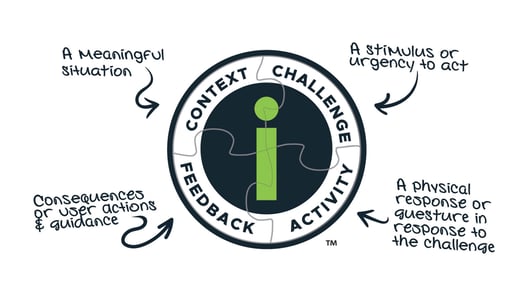Blog
On the Road with Ethan Edwards: Courthouse Square in Sullivan, Illinois
In "On the Road with Ethan Edwards," Ethan visits the Frank Lloyd Wright Pettit Memorial Chapel in Belvidere, Illinois.

.png?width=1387&height=526&name=Services%20-%20On%20the%20Road%20w%20Ethan%20Edwards%20%20(5).png)
On the Road with Ethan Edwards: Pettit Chapel in Belvidere, Illinois
By Ethan Edwards | November 04, 2021 | Custom Learning | 0 Comments
In "On the Road with Ethan Edwards," Ethan visits the Frank Lloyd Wright Pettit Memorial Chapel in Belvidere, Illinois.
One of the most persistent desires that designers of e-Learning clamor for (and this is as true today as it was 20 and 30 years ago) is a cookie-cutter of sorts that can be used to crank out e-learning modules. Whether it’s the designers themselves or maybe the executives and managers somewhat removed from the actual realities of teaching and learning, there is this persistent idea that there should be a way to create e-learning automatically, which in essence means thoughtlessly.
We know that learning takes active thinking and meaningful interactivity, yet there are many who hope that training materials can be created without a similar level of engagement. I have certainly never seen the possibility of that.
The most powerful tool to jumpstart designs that I have found is the CCAF framework articulated by Dr. Michael Allen in numerous publications. As someone who has relied on this model for more than a couple of decades, it actually feels to me like a recipe for success. The ingredients of Context, Challenge, Activity, and Feedback reliably combine to create engaging interactions that create performance change.
But the foundation of these elements also requires input from the designer to create the full interaction. Based on audience characteristics, instructional goals, performance outcomes, learning environment, etc., the designer uses media, writing, sequence, and user actions to create a unique experience based on the powerful foundation of CCAF.
The error in the “cookie-cutter” approach that is so often desired is that such models typically allow manipulation of only the more superficial aspects of interactivity. Media, writing, and sequence―without a deeper foundation―often add up to nothing. Pushing the cooking metaphor further, CCAF guarantees you have a delicious cake, but requires effort from the instructional designer to decorate it appropriately. Too often, templates and formulaic authoring don’t worry about the cake much at all, but just give lots of options for decorating; it may look beautiful on the surface, but ends up being empty once you cut into it.
This perspective on CCAF occurred to me when I came across a Frank Lloyd Wright-designed chapel in Belvidere, Illinois. I am most familiar with Wright’s Prairie Style buildings of medium to large scale. In his large projects, like the famous Robie House in Chicago or the Dana-Thomas House in Springfield, IL, the foundational ideas of his design philosophy are very apparent: low horizontal lines, windows and open corners to connect the indoors to nature, simple motifs in art glass and furnishings to create unity, etc. One finds similarities between designs and repetition within a single structure to convey these principles.
The Pettit Chapel was remarkable to me in that it is perhaps the smallest Wright building I’ve seen, and thus feels quite different from other examples I know. The setting in this very flat cemetery, the intended use, and no doubt, budget constraints probably all had an impact on this design. But nonetheless, the guiding principles that drove the Prairie School movement are still very much present. Even when circumstances might require adjusting some of the superficial elements of a design, the foundational pieces are still present.
CCAF design is very much like this. No matter what immediate circumstances require of the surface elements of a design, the interaction still has to rest solidly on the CCAF elements to have its desired impact. We can seek shortcuts in many areas of our solutions, but dispensing with the CCAF pillars of interactivity should not be an option.
Read my blog series on CCAF here >>

About the Author: Ethan Edwards
Ethan Edwards draws from more than 30 years of industry experience as an elearning instructional designer and developer. He is responsible for the delivery of the internal and external training and communications that reflect Allen Interactions’ unique perspective on creating Meaningful, Memorable, and Motivational learning solutions backed by the best instructional design and latest technologies.
Comments
Would you like to leave a comment?
Related Blog Posts
.png?width=316&name=Services%20-%20On%20the%20Road%20w%20Ethan%20Edwards%20%20(1).png)
By: Ethan Edwards | Jun, 2021
Category: Custom Learning
.png?width=316&name=Services%20-%20On%20the%20Road%20w%20Ethan%20Edwards%20%20(7).png)
Blog
On the Road with Ethan Edwards: Golden Spike National Historic Park
In "On the Road with Ethan Edwards," Ethan visits the Frank Lloyd Wright Pettit Memorial Chapel in Belvidere, Illinois.
By: Ethan Edwards | Nov, 2021
Category: Custom Learning

Blog
It’s No Mystery: Meaningful & Memorable Matters
In "On the Road with Ethan Edwards," Ethan visits the Frank Lloyd Wright Pettit Memorial Chapel in Belvidere, Illinois.
By: Ethan Edwards | Jun, 2013
Category: Custom Learning



